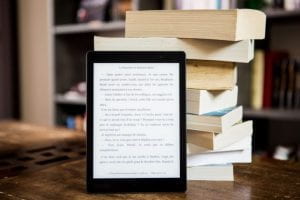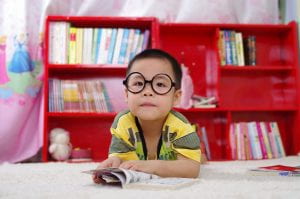ETL 402: Literature Across the Curriculum
ASSESSMENT 2 – Reflective Blog Post

Being immersed in a book is both thrilling and captivating. We all want a book to envelop us and experience it from within – as teacher-librarians our mission is to find these hidden gems and ensure our students are captivated too. My hope was ETL402 would reveal the secret to finding the right book for the right reader to engage children in literature across the curriculum, promote enquiry, and contextualise learning (Waugh, et al, 2016).
Defining children’s literature was the first step along this quest. I identified with Em Sze’s (2022, November 8) viewpoint of children’s books being timeless and suitable for adults. Something I look for when choosing a book to read to children. Some students perceive picture books as texts for younger readers. I argue that the audience is fluid because authors must engage adults too in order to share with children (Foyel, November 22). Bringing this into my own practice in the library, I reshelved senior picture books separately. This change encouraged some reluctant readers (generally in Stage 3) to value picture books once again, without feeling disenchanted or judged by their choice of format. Importantly, the enthusiasm and impact of teacher-librarians and the vital role they play in influencing students to read for enjoyment should never be underestimated (Gagen-Sprigs, 2020).
Making connections with text is vital and thinking beyond the written narrative is certainly one element that is not identified in most definitions of children’s literature (Foyel, November 23), though important for identifying new understandings (Buckley, November 11). I learnt that connections to text and reading for pleasure may be the key to academic success, an important part of empowering readers to develop critical literacy skills (Turner, 2014). Supported by numerous studies (Foyel, 2022, November 20), reading for pleasure has many positive implications for student academic success (National Library of New Zealand, n.d).
Examining the most influential books from my childhood, elements such as compelling characters, rich imagery and tension-building, influence the text choices I make for read-alouds (Foyel, 2022, November 26). This encouraged me to question how authentic sharing helps students to understand a complex world (Goldstone, 2001/2001). I recognised that sharing a book with a child is a ritualistic, bonding time (Gaiman, 2013) to delve into morals, and messages, or to simply enjoy (Foyel, 2022, November 20).
Although children are first influenced by adults’ selections, when they begin to self-select, children become the drivers of change (Foyel, 2022, November 20). I learnt that new trends in children’s literature are influenced by many things, including societal changes and the digital age (Foyel, 2022, December 23). Despite being inspired to have my students respond to literature using technology, by creating book trailers (Balafoutis, 2023 January 7), digital literature remains a challenge for me. I perceived a lack of emotional bonding and connection with students when engaging in these texts (Foyel, December 27), until I discovered the augmented reality book Between Worlds (Adam Savage’s Tested, 2016). I immediately bought a copy and became excited about the possibilities for teaching and learning with this emerging technology, I began to look at digital forms through a new lens (Yokota & Teale, 2014) and now wonder what the future holds for children’s literature as I continue my journey into the future.
GEM FOUND (though the quest continues)!
References
Adam Savage’s Tested. (2016, October 26). Between worlds: Augmented reality in storytelling [Video]. YouTube. https://youtu.be/YO1E7DBuqtc
Gagen-Spriggs, K. (2020). An Investigation into the Reasons Students Read for Pleasure. School Libraries Worldwide, 26(1), 110–123.
Gaiman, N. (2013, Oct 16). Why our futures depend on libraries, reading, and imagination. The Guardian. (Australian Edition). http://www.theguardian.com/books/2013/oct/15/neil-gaiman-future-libraries-reading-daydreaming
Goldstone (2001/2002) Whaz up with our books? Changing picture book codes and teaching implications. Reading Teacher, 55(4), 362-370.
National Library of New Zealand. (n.d.). Reading for pleasure: A door to success. Services to Schools. https://natlib.govt.nz/schools/reading-engagement/understanding-reading-engagement/reading-for-pleasure-a-door-to-success
Turner, C. (2014). Opening the portal: an exploration of the use of postmodern picture books to develop critical literacy and contribute to learning in the Australian Curriculum: English. Literacy Learning: The Middle Years, 22(1) 52-61 https://search-informit-org.ezproxy.csu.edu.au/doi/10.3316/aeipt.201744
Waugh, D. Neaum, S., & Waugh, R. (2016). Childrens literature in primary schools. SAGE Publications.
Yokota, J. & Teale, W. H. (2014) Picture books and the digital world. The Reading Teacher, 67(8), 577-585. https://doi.org/10.1002/trtr.1262



